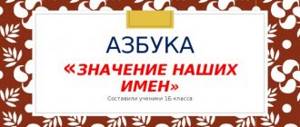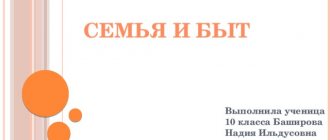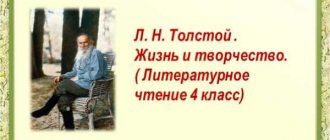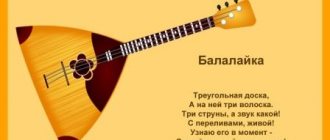Folk crafts (presentation) presentation for a lesson on the world around us (senior group) on the topic
Slide 1
FOLK CRAFTS Teacher Kapyuchenko L.V.
Slide 2
KHOKHLOMA Khokhloma is an ancient folk craft that originated in the Nizhny Novgorod region. Khokhloma is a decorative painting of wooden utensils and furniture, made in black and red on a golden background. Khokhloma painting is characterized by floral patterns: flowers, leaves and berries.
Slide 3
GZHEL Gzhel is an ancient folk craft. The first Gzhel masters fired ceramic dishes in kilns and called them “Zhgel” or “Gzhel”. The dishes were covered with white enamel and painted in blue tones. Later they began to paint porcelain products using cobalt blue.
Slide 4
MATROSHKA Matryoshka is a Russian wooden toy consisting of several painted dolls nested one inside the other. Each doll, except the last one, is divided into two parts. There are several traditions of painting nesting dolls.
Slide 5
GORODETSKAYA PAINTING Gorodets painting is a Russian folk craft that originated in the area of the city of Gorodets. Gorodets painting often uses the image of a horse, which is a symbol of wealth, and the image of a bird, a symbol of happiness.
Slide 6
DYMKOVSKAYA TOY Dymkovo toy is a Russian folk craft that originated in the settlement of Dymkovo, near the city of Vyatka. Dymkovo toys are made from clay. These are mainly ladies, buffoons, elegant turkeys and roosters. For painting, craftsmen use bright colors and simple geometric shapes as patterns.
Slide 7
FILIMONOVSKAYA TOY The Filimonovskaya toy is a Russian folk clay toy that was made in the village of Filimonovo, Tula region. The main thing in it is the whistle.
Slide 8
BOGORODSKAYA TOY Bogorodskaya toy is a folk craft that originated in the village of Bogorodskoye near Sergiev Posad. Bogorodsk craftsmen carve toys from wood that move with the help of ropes, strips, and springs. The symbol of this craft is the toy “Man and Bear”
Slide 9
KARPOGOL TOY Karpogol toy is a Russian artistic craft that was widespread in the area of the city of Kargopol, Arkhangelsk region. In the painting of modern toys, traditional symbolism has been preserved: a circle and a cross in various combinations as solar signs (symbols of the sun), signs of earth, fire, water, sown field, harvest, fertility.
Slide 10
PALEKH Palekh is a Russian folk craft that originated in the village of Palekh, Ivanovo region. Palekh craftsmen cover boxes, brooches, and pendants with black varnish and paint them.
Slide 11
Zhostovo painting Zhostovo painting is a folk art craft that originated in the village of Zhostovo, Moscow region. Zhostovo craftsmen painted metal trays of various shapes. They paint on a black background and use a bouquet of garden and wildflowers as the main motif.
Slide 12
Sources used: Internet resources
Abashevskaya Russian folk toy
Abashevo Russian folk toy is made of clay. Its name comes from the village of Abashevo, Penza province. In the 19th–20th centuries. The best pottery masters lived in the village of Abashevo, whose works were valued throughout Russia. In the Penza province, in the village of Abashevo, there were rich deposits of clay, which was originally used to make beautiful dishes. Abashevo toys were first made in the mid-19th century for children's games. But after a while, the toys began to be given a satirical character, with the aim of ridiculing liars and those who profit from their neighbors.
The peak of development of the Abashevo toy came in the 20th century, when many craftsmen in making dishes from clay could no longer compete with factories. It was during this period that most craftsmen began making whistles, which aroused genuine interest and even delight among children. One of the famous masters of that period was Timofey Zotkin . His works had a significant influence on subsequent generations.
Abashevskaya Russian folk toy
The subjects of Abashev's toys are varied, among the main ones are animals and birds, the main feature of which is an overly long body with a neck and short legs. Animals were often depicted with lush curls and beards. Mostly they sculpted rams, deer, and goats. In appearance they resemble fantastic centaurs, which are characterized by some satire. Abashevo's toy is designed to ridicule human vices, especially love of money and deception. That is why, along with unusual animal figures, you can see an elegant young lady, a dashing horseman and a prince in the form of a ram with a human face.
When making a toy, the master uses clay and several stacks, with the help of which he forms a figurine, makes holes and patterns. Afterwards the product is fired and painted. To paint the Abashevo toy, craftsmen used oil and enamel paints, which ensured the durability and richness of the designs. The theme of the painting is, first of all, nature and the surrounding world, not devoid of symbolism. The Abashevo toy is dominated by red, green and blue colors.
Dymkovo Russian folk toy
The Dymkovo Russian folk toy, which is also made from clay, is widely known to this day. The Dymkovo toy has been made for centuries. Such a toy was made in the settlement of Dymkovo, located near the city of Kirov. Craftsmen worked in the Dymkovo settlement alone and in families. By the beginning of the 19th century, toys from Dymkovo spread throughout Russia.
Dymkovo folk toy “Girl with a samovar”
In those days, more than 100 thousand toys were produced per year, which went on sale, including in the capital and in the Orenburg province. 59 families from Dymkovo worked on their creation. The most famous masters were the Koshkins and Nikulins . At the beginning of the 20th century, Dymkovo toys lost their former popularity, although already in the 1930s the Dymkovo craft began to revive in Kirov. The Dymkovo toy is traditionally made in the form of a lady, horsemen, hussars, fantastic birds and animals, and there are also multi-figure plot compositions.
The process of making a Dymkovo toy consists of two stages: sculpting the product and painting it. There are traditions in creating the shape of a toy and in its design, which are expressed primarily in staticity, splendor of forms and brightness of painting. For example, in the composition “Mother with Children” the figure of a woman looks straight ahead, she seems to have frozen in this position. The same static quality is present in toys depicting birds and animals.
The following images of Dymkovo toys are especially popular::
- The turkey is as colorful as a peacock.
- The lady is both an elegant city person and a traditional peasant woman in a kokoshnik. Children can be depicted next to her.
- Lamb - figurines of this animal can have horns of different sizes. Note that they are always gold plated. Lambs are depicted as ordinary or in elegant clothes.
- The horse is traditionally in bright blue colors.
- Men in Dymkovo toys are most often depicted as a rider on a horse, a walking city or village gentleman.
- Pigs, birds, bells. They are depicted in different variations and tones.
Dymkovo Russian folk toy
To make the Dymkovo toy, Vyatka red clay and river sand are used. Each part of the toy is created separately: a body is molded from a round piece of clay, onto which the remaining parts of the toy are attached. Next, the product is dried in the open air for several days. Then it is burned on fire. In Rus' they used a stove for this. Today it is a muffle furnace, where the temperature reaches 1000 °C. When the figurine cools, it is bleached. In Rus', milk was also used for this.
The next stage is coloring. In ancient times, natural dyes based on eggs, milk, soot, vinegar, and tempera were used for this. These days, acrylic paints are most often used. Bird tails, animal horns, and people's clothing are covered with copper leaf (thin foil). Dymkovo toys are characterized by the use of red, blue, yellow, emerald, light blue, green and orange. White and black paint are used in small quantities. Each color with which the toy is painted has its own meaning: white is a symbol of purity; black - lies; green - nature; red - strength, health; blue - sky.
The patterns used in painting Dymkovo toys are closely related to folk beliefs and symbols of nature. For example, the sun and moon are a symbol of the origin of life; diamonds are a sign of fertility; waves are a sign of sky and moisture. The final stage of painting is the application of gold leaf. Currently, the Dymkovo toy is developing, new technologies are emerging, fresh ideas are appearing, but the manufacturing traditions remain unchanged.





